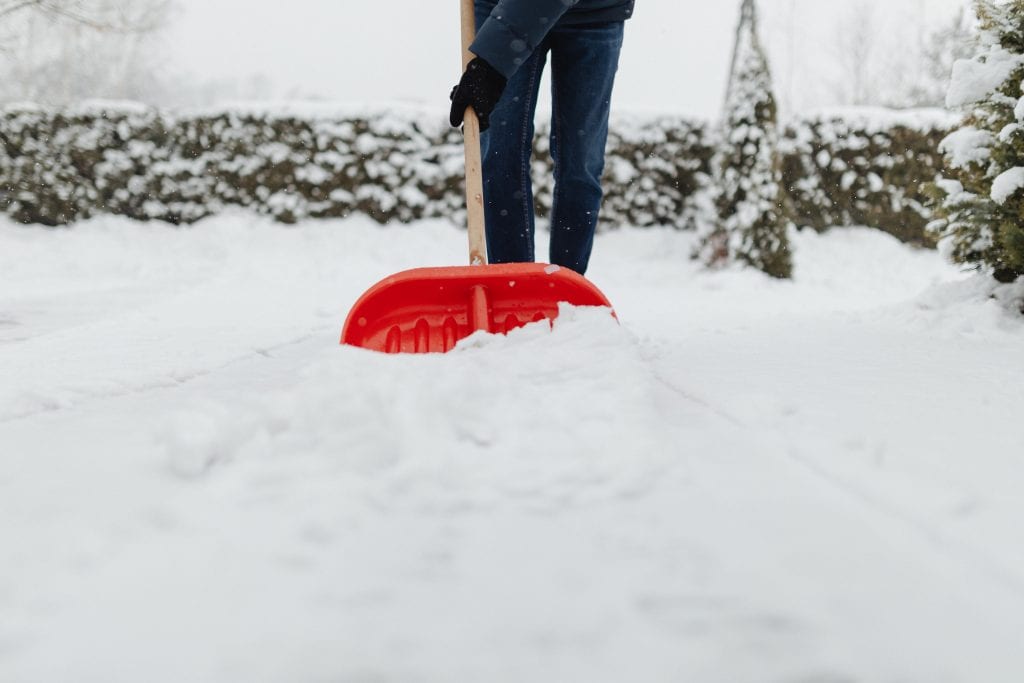Snow Shoveling
The important features in choosing a shovel include its weight, the weight of the material being moved, the handle type, and the shovel’s shaft length.
- The weight of a shovel should match the type of job being done. A light shovel is suitable for light snow, but a sturdier one would be needed for wet, heavy snow.
- The handle type is important. A D-grip handle helps keep your wrists in a neutral, untwisted position and can provide more comfort and control.
- Longer shovel shafts ease the strain on back muscles, whereas shorter lengths have better stability when transferring the snow. A strong and light shaft is ideal.Make sure to wear gloves that protect your hands and improve your grip, and wear sturdy, nonslip footwear with good arch support. Follow these tips when shoveling:
- Stand upright and bend your knees slightly so that your leg strength moves the load.
- Keep your arms and elbows close to your body, and when you lift, use your legs instead of your back.
- Instead of twisting your trunk, always turn your feet and body in the direction of where you want to drop the shovel’s load.
- Do not throw the snow more than three to four feet, and be sure to turn your feet in the direction you are throwing the snow.
- Never throw snow over your shoulder.
- When you shovel snow quickly, the maximum weight of both shovel and load should not exceed 10 to 15 pounds.

